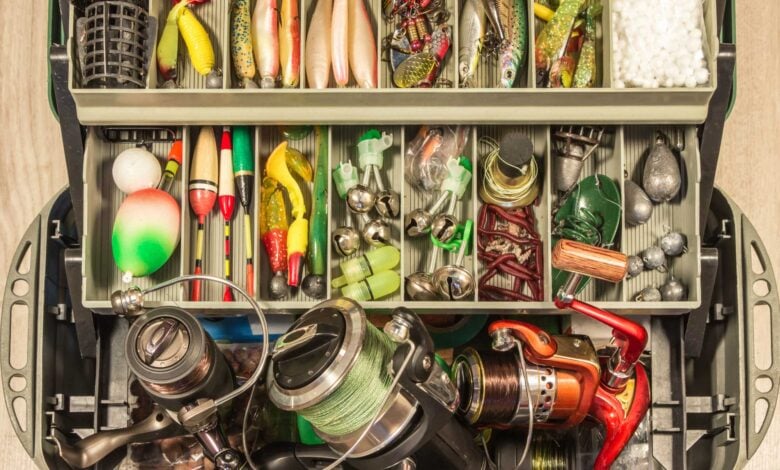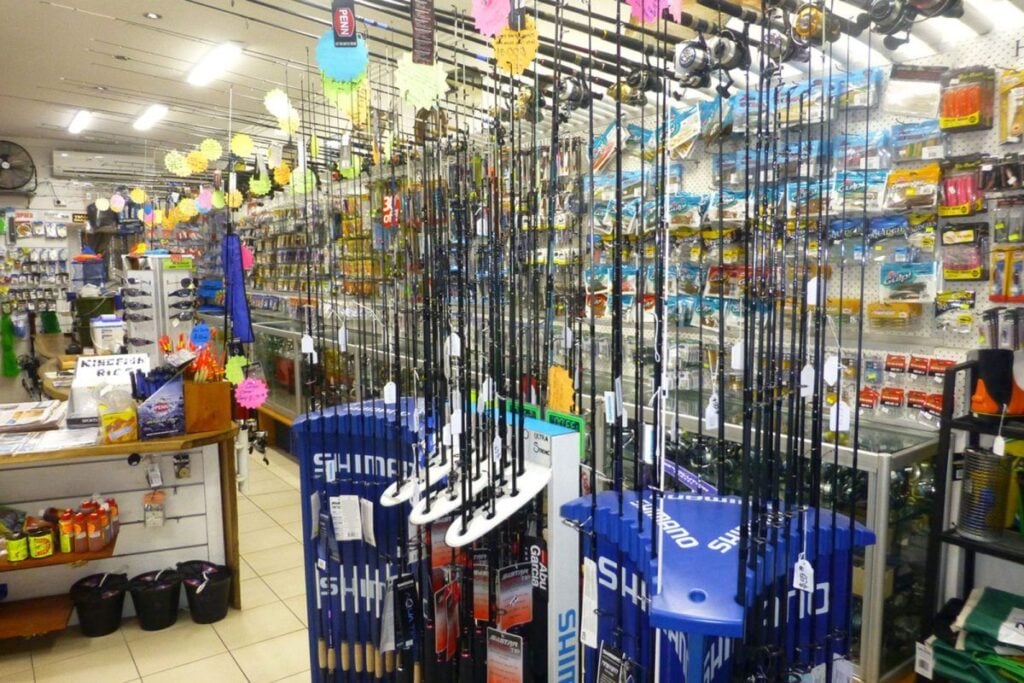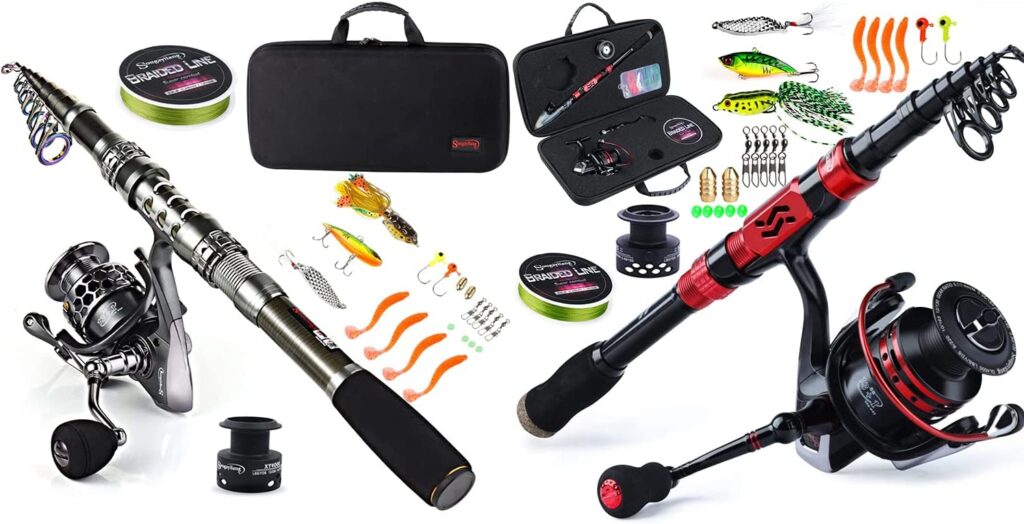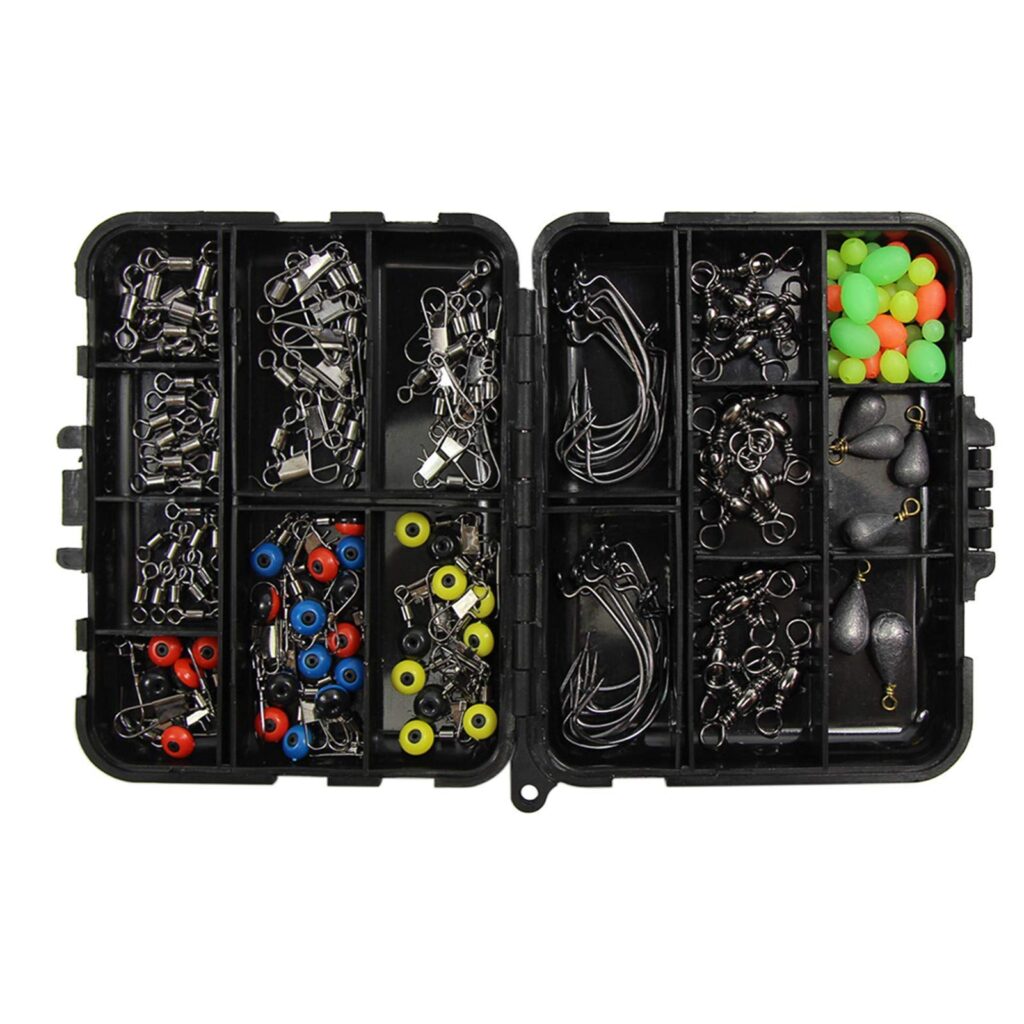Overview of Fishing Accessories

What is Fishing Accessories
Fishing gear refers to a variety of tools, equipment, and accessories used by anglers to enhance their fishing experience and increase their chances of successful fishing. These accessories serve various purposes and are designed to assist fishermen in different aspects of their fishing practice. Here are some common fishing gear items:
- Fishing Rod and Reel: The most basic and essential fishing gear items are the fishing rod and reel. The fishing rod is a long, flexible pole typically made from fiberglass, graphite, or other materials. It’s used to cast the fishing line into the water and reel in the fish. The reel is attached to the rod and aids in storing, releasing, and retrieving the fishing line.
- Fishing Line: Fishing lines come in various materials such as monofilament, fluorocarbon, and braided lines. They are used to connect the fishing hook or lure to the rod and reel. Fishing lines vary in strength, thickness, and visibility, depending on the target fish species and fishing conditions.

- Hooks: Hooks are designed to pierce fish when they take the bait or lure. They come in different sizes, shapes, and configurations, including single hooks, treble hooks, circle hooks, and barbless hooks. Hooks are often made from steel or other strong materials.
- Baits and Lures: Baits and lures are used to attract fish to the fishing hook. Natural baits can include live bait such as worms, small fish, or insects. Artificial lures are manufactured to mimic the appearance and movement of prey, such as spinners, jigs, crankbaits, soft lures, and flies. Different types of baits and lures are used depending on the fish species and fishing technique.
- Tackle Box: A tackle box is used to store and organize fishing gear, keeping everything accessible during your fishing trip. It typically contains compartments or inserts to store hooks, lures, fishing line, weights, swivels, and other small items. Tackle boxes can be made of plastic, metal, or fabric and come in various sizes and designs.
- Fishing Nets: Nets are used to land or catch fish once they are near the water’s surface. Landing nets have a wide frame with a mesh net that allows fishermen to capture the fish without harming or allowing it to escape. Nets come in different sizes and materials such as nylon or rubber.
- Fishing Weights and Sinkers: Fishing weights, also known as sinkers, are used to sink the fishing line and bait to the desired depth in the water. They come in various shapes such as split shot, bullet, or egg, and are typically made of lead or tungsten. The weight is attached above the hook to provide stability during casting and control the presentation of the bait or lure.
- Floats and Bobbers: Floats or bobbers are buoyant devices attached to the fishing line to indicate when a fish is biting the bait. They float on the water’s surface and submerge or move when a fish pulls the line. Floats come in different shapes and sizes and can be made of plastic, cork, or foam.
- Fishing Tools: Fishing tools include pliers, tweezers, cutters, and other handheld tools used for various purposes. Pliers are used to remove hooks, crimp fishing lines, or bend wires. Tweezers help hold small items, like tying knots or removing hooks from a fish’s mouth. Cutters are used to cleanly cut fishing line.
- Fishing Clothing and Accessories: These include clothing and accessories designed for comfort and protection while fishing. Fishing hats, sunglasses, gloves, waders (waterproof pants), and fishing vests with multiple pockets are common examples. These items help shield from the elements and provide practical storage for fishing gear.

A Detailed Look at Tackle Boxes
Tackle boxes are essential for organizing and storing fishing gear, keeping everything easily accessible on your fishing outing. Here’s an in-depth look at tackle boxes, including their features, organization tips, and the various types available:
Features of Tackle Boxes:
- Size and Compartments: Tackle boxes come in various sizes and offer different compartment layouts. Look for a tackle box with compartments of various sizes to accommodate different accessories like hooks, lures, weights, and swivels. Adjustable dividers are useful for customizing space according to your needs.
- Material: Tackle boxes are typically made of plastic, metal, or fabric. Plastic boxes are common, offering durability, water resistance, and easy cleaning. Metal boxes provide extra durability but can be heavier. Fabric tackle bags are lightweight and portable, often equipped with multiple pockets and compartments.
- Durability and Water Resistance: Consider the durability of the tackle box, especially if you fish in challenging conditions or store heavy items. Look for boxes with sturdy hinges, closures, and reinforced corners. Waterproof or water-resistant tackle boxes can protect your equipment from moisture and ensure their longevity.
- Portability: If you’re frequently on the go, pay attention to the portability of the tackle box. Some models feature built-in handles, shoulder straps, or backpack designs for easy transportation. Make sure the box is lightweight and comfortable to carry, especially if you’ll be walking long distances.
Organization Tips for Tackle Boxes:
- Categorize Accessories: Group similar accessories together, such as hooks, weights, and swivels. This allows for quicker access and helps maintain order in the tackle box.
- Use Small Containers: Utilize small plastic containers or resealable bags to store loose items like soft lures, fishing line spools, or small accessories. This prevents tangling or loss.
- Consider Accessibility: Place frequently used items in easily accessible compartments or at the top of the tackle box for convenient handling. This includes essential tools like pliers, cutters, and extra hooks.
- Label the compartments or use transparent containers to quickly identify contents. Sorting items by size or type can further improve organization and save time.

Types of Tackle Boxes:
- Hard Tackle Boxes: These are the most common tackle boxes, made from durable plastic or metal. They typically feature multiple compartments or drawers for orderly storage. Hard tackle boxes offer excellent protection for delicate items and are ideal for anglers with a large collection of fishing gear.
- Soft Tackle Bags: Tackle bags resemble backpacks or shoulder bags and are made of sturdy fabric. They often have multiple pockets, compartments, and removable trays. Soft tackle bags are lightweight, portable, and suitable for anglers who need to carry their gear over longer distances.
- Fishing Gear Backpacks: These tackle boxes combine the convenience of a backpack with the functionality of storing fishing gear. They usually have large compartments for storing tackle trays as well as additional pockets for personal items or other fishing accessories. Fishing gear backpacks are popular among anglers who prefer hands-free handling.
- Tackle Trays: Tackle trays are standalone storage units that fit into larger tackle boxes or bags. These trays feature adjustable dividers to individually store accessories of different sizes. Tackle trays are useful for anglers looking to expand their storage capacity or have specific organizational preferences.
Remember to consider your fishing needs and preferences when selecting a tackle box. Take into account the size of your gear collection, the fishing environments you frequent, and the desired level of organization. A well-organized tackle box can save time, reduce frustrations, and make your fishing experience more enjoyable.




